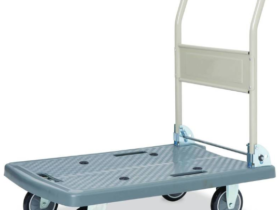Having a fire extinguisher in your workplace or home makes you feel safer. However, a non-functional, damaged, or uncharged fire extinguisher will not be helpful at all. Therefore, it should be mandatory to inspect and examine the fire extinguisher monthly to ensure that it is in a decent working state. A monthly fire extinguisher inspection is a simple procedure as it only involves a quick and visual checking. This inspection can be performed by anybody as long as they follow the proper steps and safety instructions.
So, let’s learn about how to perform a monthly fire extinguisher inspection by following these simple NYC fire extinguisher inspection steps:
- Check for Visibility and Accessibility
Check to ensure that the placement and location of the fire extinguisher are appropriate and that it is visible and accessible to everybody.
- Check the Tag
Make sure that the fire extinguisher tagging is in place properly. This tag shows the date on which the extinguisher was previously inspected or maintained.
- Examine the Gauge
Check if the needle on the gauge is pointing towards the green-colored area. This shows that the extinguisher is fully charged and is ready to be used. In case the needle is not in the green zone, the extinguisher will have to be replaced or refilled from the local fireplace.
- Check the Safety Pin
Make sure that the tamper seal is in place and is holding the safety pin firmly. Also, check for any impairment in the seal or pin.
- Weighing or Hefting
Even if the gauge shows that the extinguisher is full, you need to check further if the extinguisher is fully charged or not. To ensure this, pick it up or ‘heft’ it. If the extinguisher is, in fact, fully charged, then you should be able to feel the weight of the extinguishing agent inside. If you feel no movement of the agent inside or if the extinguisher does not feel much heavy, the agent may have expired and cannot move freely anymore, or there is not enough agent inside. In either case, the extinguisher needs to be replaced or recharged.
- Exterior Examination
Inspect the exterior body of the extinguisher to make sure that there is no sign of physical damage, dents, or corrosion. In case the cylinder is damaged in any way, then the extinguisher should be immediately replaced, as it can be extremely dangerous and hazardous.
- Check the Hose
Inspect the hose to make sure that there are no breaks, cracks, or blockage in the pipe. If you find any problem in the hose, then replace the extinguisher or at least the hose.
- Update the Tag
You have now completed your monthly fire extinguisher inspection. Make sure to update the tag by recording the date of inspection.
Conclusion
It takes only a few minutes and minimum energy to go through these steps every month. But it ensures your safety and is thus, well worth your while.










